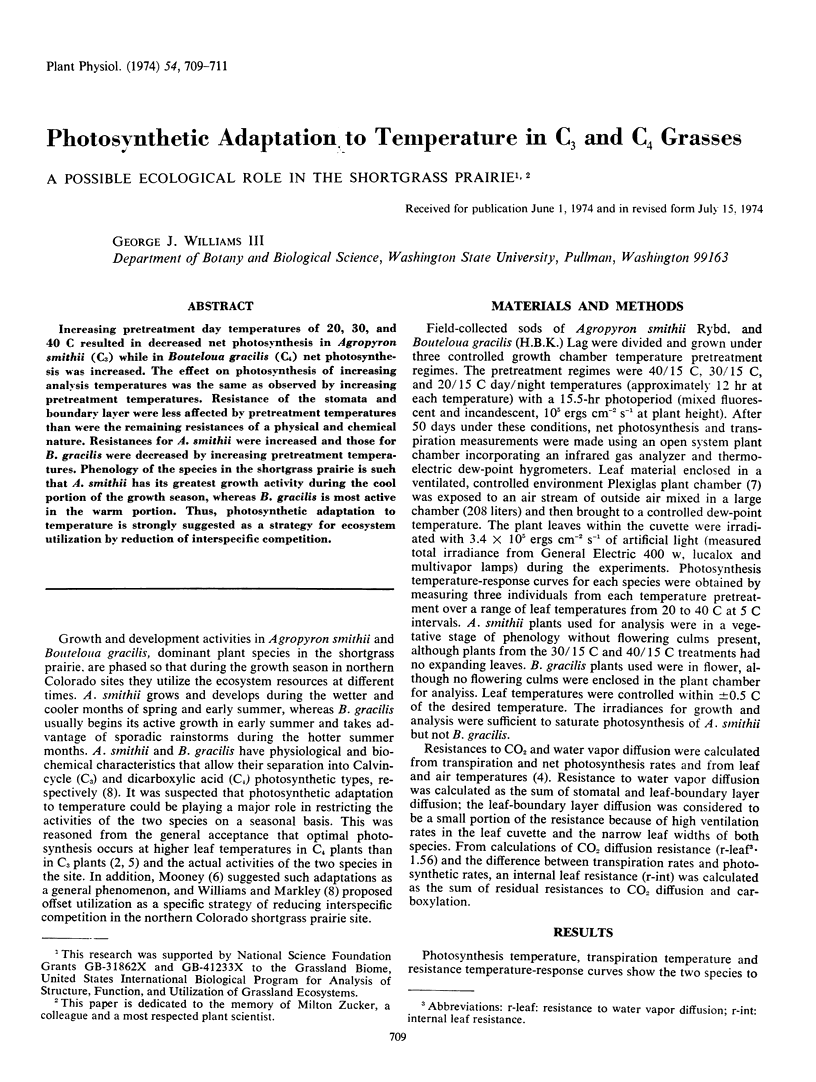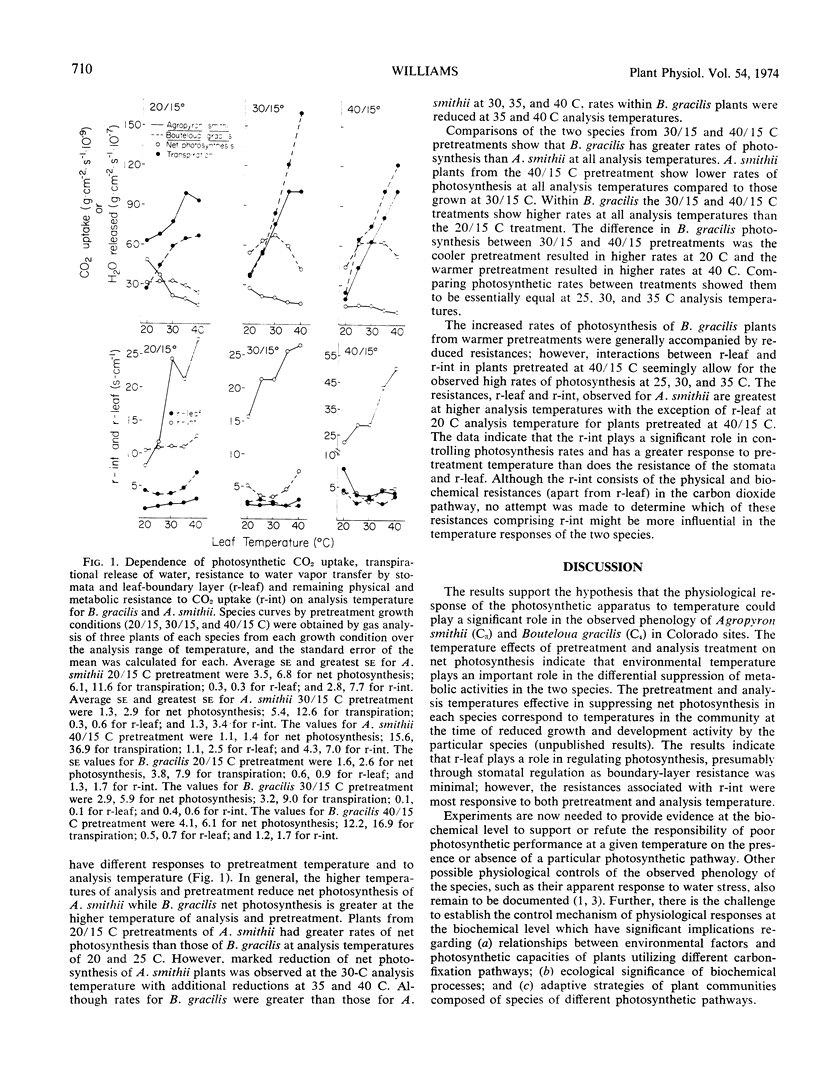Abstract
Increasing pretreatment day temperatures of 20, 30, and 40 C resulted in decreased net photosynthesis in Agropyron smithii (C3) while in Bouteloua gracilis (C4) net photosynthesis was increased. The effect on photosynthesis of increasing analysis temperatures was the same as observed by increasing pretreatment temperatures. Resistance of the stomata and boundary layer were less affected by pretreatment temperatures than were the remaining resistances of a physical and chemical nature. Resistances for A. smithii were increased and those for B. gracilis were decreased by increasing pretreatment temperatures. Phenology of the species in the shortgrass prairie is such that A. smithii has its greatest growth activity during the cool portion of the growth season, whereas B. gracilis is most active in the warm portion. Thus, photosynthetic adaptation to temperature is strongly suggested as a strategy for ecosystem utilization by reduction of interspecific competition.
Full text
PDF




